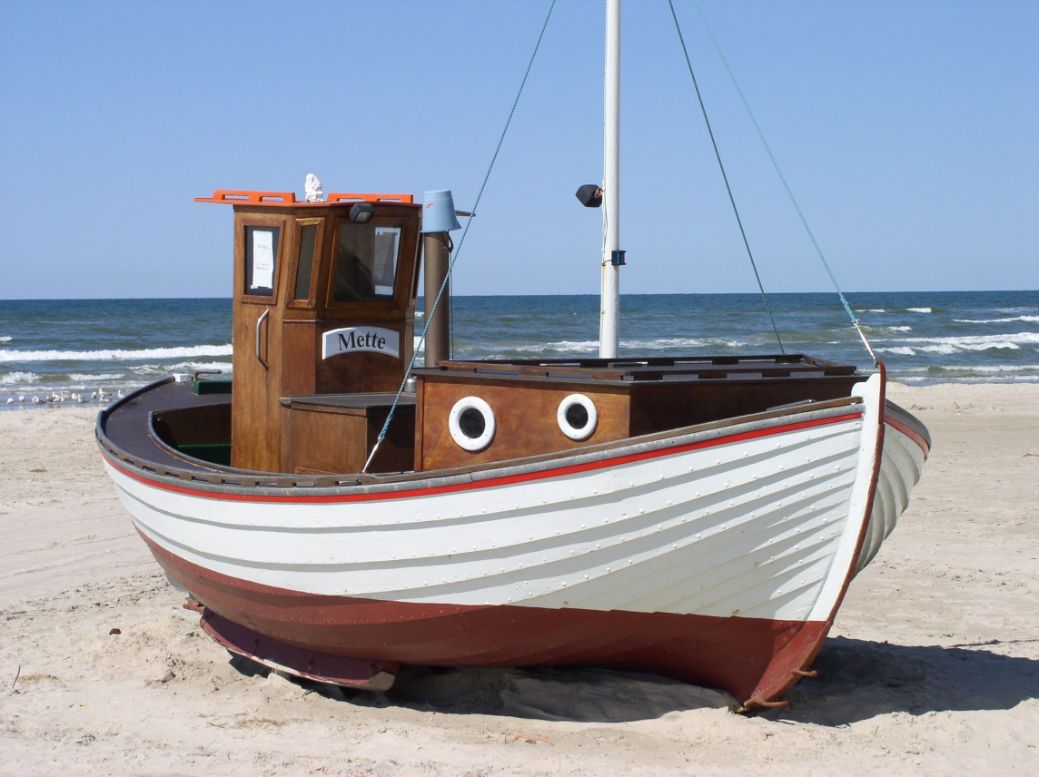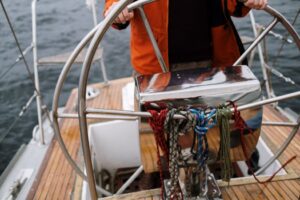Learn how to get a replacement boat capacity plate to make your boat better.
Federal law states that all boat builders must have a capacity plate, decal, or sticker clearly visible on the boat, in full view of the helm. If your pontoon boat doesn’t have one, or yours is missing then you could be breaking the law.
A motorized vessel’s maximum weight, measured in people, motor, and equipment, are listed on a boat capacity plate. The model, serial number, and manufacturer of the vessel are also listed.
Getting a replacement boat capacity plate is as simple as following these steps.
How to Replace Your Missing Capacity Plate?
If you do need to replace yours then you can actually pick them up on Amazon. There is a business that offers new pontoon boat capacity decals that you can purchase. You provide the company with the information to be included on the decals, and they print and send it to you.
The new pontoon capacity plate will include:
- the maximum weight of persons on board in pounds,
- the maximum carrying weight of the boat in pounds and
- the maximum horsepower recommended for the boat
You can relax knowing that you’re in compliance with the law and won’t draw the US Coast Guard’s ire by using this pontoon boat capacity replacement solution because you always have access to the capacity information.
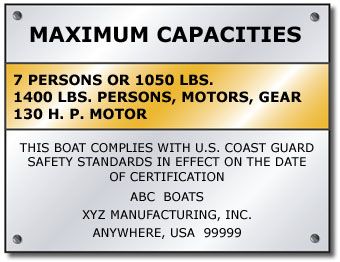
Not just for legal reasons, but also for safety reasons, having a pontoon capacity plate on board is crucial. By having yours in clear sight of the helm, with one glance you can make sure that you aren’t overloading your boat, or over-powering it.
To avoid having too many passengers board and causing the pontoon to become unstable, for instance, it will keep you safe and ensure that you don’t exceed the maximum horsepower limit.
Although the capacity plate limits shown on your decal are intended for normal operating conditions, if I were out in bad weather or on rough water, I would carry less weight.
What is a Capacity Plate?
Federal law mandates that capacity plates be included by boat manufacturers. If the boat is less than 20 feet in length and powered, this plate must be visible from the helm or steering area. Canoes, kayaks, sailboats, and inflatables are not required to have plates. The capacity plate details the following:
- The boat’s maximum horsepower
- The maximum number of people and/or weight in pounds
- Maximum combined weight, measured in pounds, of all passengers, gear, and engines.
- The boat manufacturer
- The boat model
- A serial number may also be included
The designs for capacity plates come in a variety of styles. Older license plates also looked different. Different levels of detail were provided. For instance, the maximum number of people for some plates may have been present.
This would be followed by a line for maximum weight. Now, these are often combined as one line. In the following line, the maximum weight—including the engine and gear—is listed.
Additionally, the capacity plate needs to state whether the boat complies with American standards. safety guidelines set forth by the Coast Guard.
Why is Horsepower Capacity Listed?
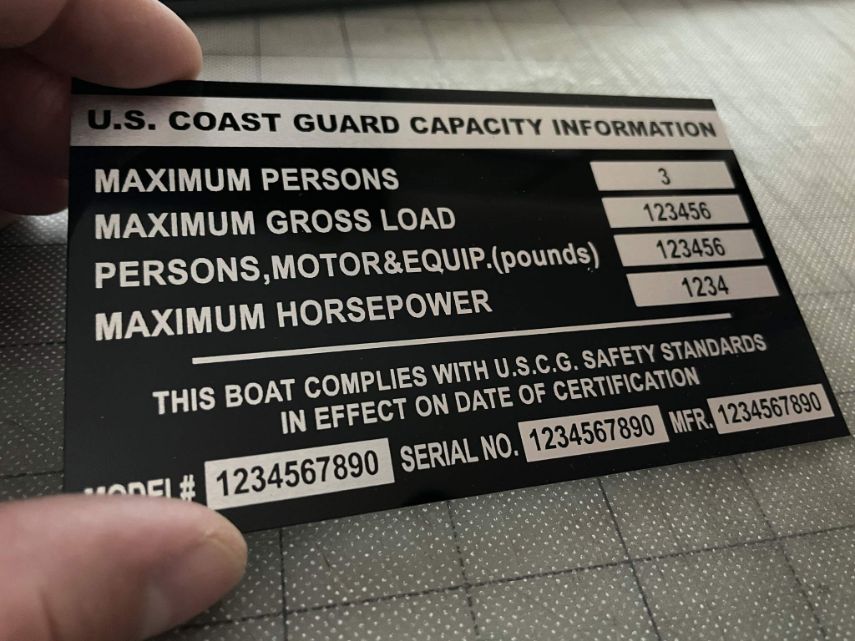
The horsepower on a boat’s capacity plate is very important. It may be dangerous to have an engine that is too big for your boat. Putting a massive engine on a small boat and trying to make it fly might seem like fun. The issue is that larger engines sometimes weigh too much.
You might end up putting so much weight on the stern that the boat flips. If it doesn’t flip, the transom might dip too low. Capsizing is a possibility if you take on water.
Why are Weight and Number of People Listed?
The weight restriction is obvious. However, some boaters are perplexed as to why there is also a maximum passenger capacity. It’s because people are very unpredictable. Adding 1000 lbs. of gear safely to your boat is very simple if it can support that weight.
However, a 1000 lb person capacity would not be. The gravitational center of each individual changes as they move. They might all assemble on one side of the boat. Beyond just being overweight, having too many people can lead to other issues.
Additionally, keep in mind that weight fluctuation is a fact of life for people. A human’s weight is averaged out to be 150 pounds for the purposes of a capacity plate.
Therefore, if you have passengers who weigh significantly less or more, it can distort that particular figure. That’s why there is a strict person capacity weight limit regardless of the number of passengers.
Your gear must be balanced. The bow or the port side cannot support the entire 1000 lbs of the boat’s weight. Achieving an even distribution is crucial. That will keep the boat operating efficiently. It facilitates handling and eases engine strain.
- The boat will crash into the water if its bow is particularly heavy. It significantly slows down the process. The engine is put under stress, and you could become dehydrated.
- The boat will list if there is too much weight to port or starboard. Your boat might capsize as a result of another boat’s wake. Additionally, you might begin absorbing water.
- The engine can flood under a heavy stern. Transoms can sink and boats can capsize. Additionally, there is a chance that the boat will capsize or that a man will fall overboard.
Ensure that there is enough space for all passengers to sit. Especially if you’re getting close to capacity, keep people off the transom and the bow.
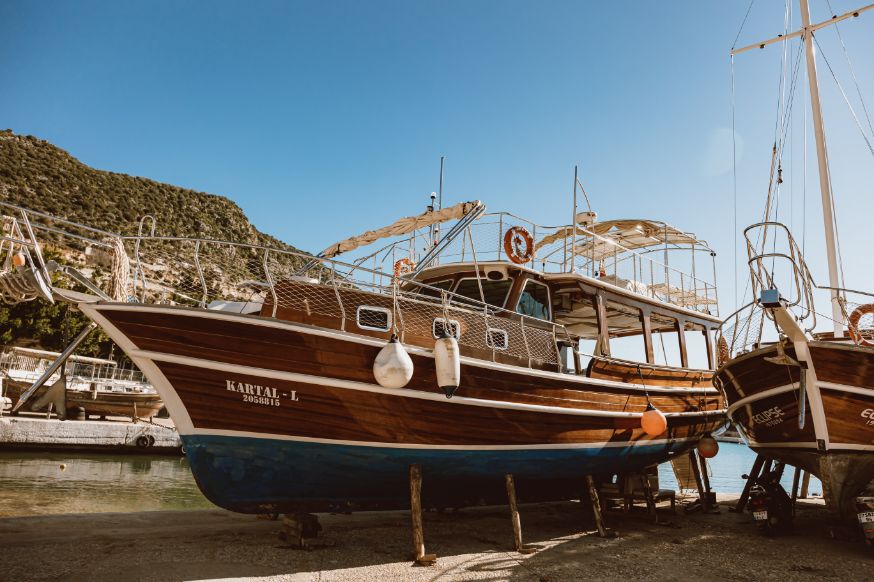
Missing Capacity Plates: Important!
Please take note that it may be illegal for you to purchase and install a new capacity plate on your pontoon boat with false and inaccurate information.
The capacity plate and the details on it serve as the manufacturer’s certification that the boat and all of its parts abide by all applicable Federal boat construction and safety standards.
Aside from voiding any boat warranties, being denied insurance coverage, and exposing yourself to expensive lawsuits (including punitive damages for intentional acts) in the event of an accident or collision, changing or fabricating this certification and capacity information can cause a lot of legal problems.
In all cases get the correct plate for YOUR make, model, and year of the boat. To ensure that you have everything on there exactly right, call the pontoon boat’s manufacturer and double-check what should be included.
Seemingly identical boats may have different capacities. For instance, a 2012 Sun Tracker 22′ DLX has a 90 HP maximum. With 115 HP, the 2014 Sun Tracker 22′ DLX is capable.
In spite of the fact that there is no discernible difference between the two boats when they are placed side by side, one of them is given a higher rating.

